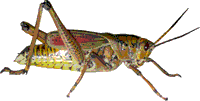Entomology Collections, General

Entomology Papers from Other Sources
Document Type
Article
Date of this Version
1998
Abstract
In central Veracruz State, Mexico, tephritid fruit fly pupae are commonly attacked by ants, staphylinid beetles, and other predators. Excavations in 2 sites with different soil characteristics revealed that Anastrepha spp. (Diptera: Tephritidae) larvae typically burrowed no >2 cm before pupating and rarely burrowed >5 cm. At 4 field sites, pupae of the most commonly encountered local Anastrepha sp. (A. obliqua, ludens, and striata or fraterculus) were placed on the soil surface and at depths of 2.5 and 5 cm and were subsequently sampled daily for 10 d. Pupae on the surface invariably disappeared at a greater rate than those under the surface. There was no difference in the disappearance rate of pupae buried at 2.5 and 5 cm, suggesting that larvae would gain no benefit by pupating at depths below those encountered in nature. The rate of disappearance of the buried pupae differed considerably among the sites. At the end of the sampling period the proportion of pupae remaining ranged from 15 to 70%. Differences in the species of predators present and soil characteristics may have contributed to these differences in disappearance. Pupae disappeared at the highest rate in a site with dry loose soil. It was lowest in sites with damp clay soils characterized by fine particle size and small interparticle spaces.


Comments
Published in Environ. Entomol. 27(6): 1310-1314 (1998).